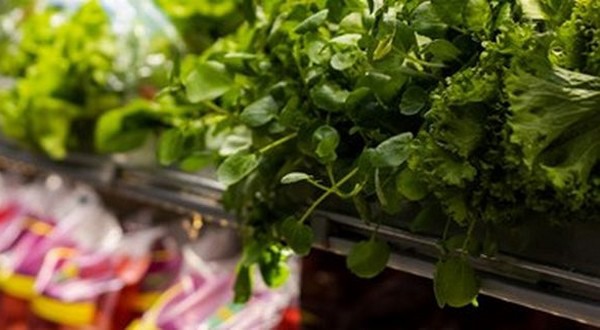Michigan State researchers are working to develop smart packaging to improve the world’s food safety and security with the support of new grant from the U.S. Department of Agriculture’s National Institute of Food and Agriculture.
 “The motivation for this work is really strong,” said the grant’s principal investigator, Changyong Cao, who is an assistant professor in MSU’s School of Packaging and director of the Soft Machines and Electronics Laboratory. “People are hungry. People are starving.”
“The motivation for this work is really strong,” said the grant’s principal investigator, Changyong Cao, who is an assistant professor in MSU’s School of Packaging and director of the Soft Machines and Electronics Laboratory. “People are hungry. People are starving.”
The USDA estimates that between 30 and 40% of the country’s food is lost or wasted each year. If the Spartan team could help extend the shelf life of food by even a day during shipping, distribution, and storage, that would significantly mitigate these problems, Cao said.

Intelligent packaging
Cao’s proposal, which the National Institute of Food and Agriculture awarded nearly $500,000, is to create intelligent packaging that would help ensure food is stored and handled properly as it makes its way through the supply chain.
“We thought about how we could make the packages smarter, more intelligent while bringing benefits to food safety and storage,” said Cao, who is also an assistant professor in the Departments of Mechanical Engineering as well as Electrical and Computer Engineering. “The packaging itself may not cost a lot, but it’s value is actually very high in protecting food safety and consumers’ health.”
In fact, experts project that the global smart packaging market will surpass $23 billion by the end of next year, Cao said.
Most current smart packaging designs rely on passive tools to share qualitative data, such as labels that change color in response to temperature. With the new grant, Cao’s team is building a prototype smart packaging platform that actively monitors food and its environment, while transmitting quantitative data with flexible electronic tags.
Flexible tags
The flexible tags will equip packaging with an array of nanomaterials-based sensors that can keep tabs on temperature and sniff out signs of rotting and spoilage. The system will also include wireless transmitters to share that data with shippers and distributors, creating a record of the food’s health and history.
“This will give you more quantitative data and, because of that, more confidence,” Cao said. Although this grant is focused on food security, Cao stressed that the technology could be easily integrated into other supply chains for products that must be shipped and stored with special care, including vaccines and transplant organs.

www.canr.msu.edu
